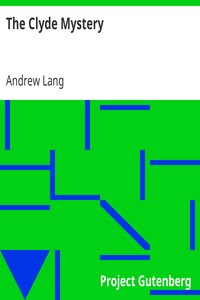| Summary |
"The Clyde Mystery" by Andrew Lang is a scholarly study combining elements of archaeology, anthropology, and folklore, written in the early 20th century. The work delves into the 'Clyde Mystery,' a controversial archaeological enigma surrounding a collection of unusual artifacts discovered in the Clyde estuary, near Dumbarton. Lang explores the authenticity of these artifacts, which include enigmatic stone objects, and presents divergent theories about their origins and significance. The beginning of the book outlines the intricate debate surrounding the artifacts found in the Clyde basin between 1896 and 1905, setting up various theories about their authenticity and purpose. Lang introduces key players in this controversy, including archaeologist Dr. Robert Munro, who argues that many items are forgeries, and W. A. Donnelly, the local artist and excavator behind these discoveries. He depicts both the physical artifacts and their recorded contexts, expressing a desire for a cautious approach to these archaeological findings, emphasizing the open questions they raise about ancient human practices and beliefs. This framework establishes the tone for a detailed examination into the very nature of proof and interpretation in historical studies. (This is an automatically generated summary.)
|

